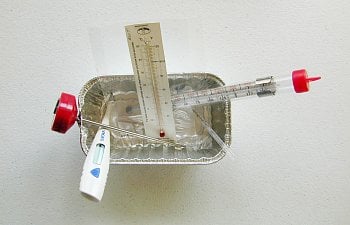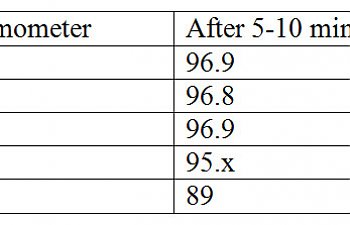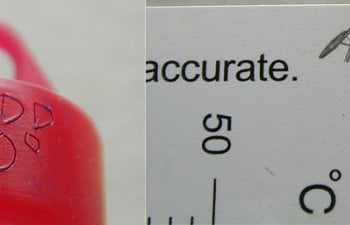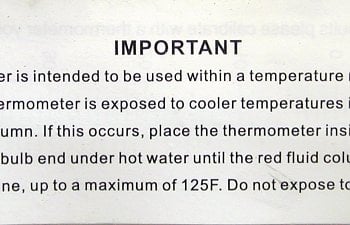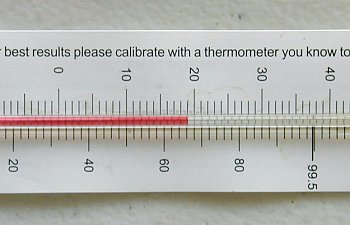ETA on 4-11-20...I now use this one...https://www.thermoworks.com/RT301WA.....
...but before that:
Why and how I went to testing my bator therms against a human oral therm.
Hygrometer testing at bottom of page.
Am using 'therm' for 'thermometer' cause I'm a lazy typer. This article is not laid out as well as it could be, part of post I saved and have now edited and added to. I wanted to make it an article so I could link it easily and was prompted to do so now as hatching season has landed here and I am testing my own therms and a brand new incubator. There is much confusion about accuracy of incubator therms, I hope this helps someone gain some peace of mind...not knowing if your bator therm is accurate can be a truly anxiety invoking experience and takes some of the joy out of hatching.
Last year about this time I went in search for a good truly calibrated therm for comparing my incubating therms against. Visited a local place called 'Something Something Thermometer', they now mostly just sell and distribute online and to various retail stores, but they used to support the local dairy industry and calibrated (actually adjusting temperature recording devices to meet qualified regulatory standards)thermometers for the local dairy's, which needed to met FDA guidelines. They confirmed my suspicions that most thermometers available in a retail setting vary greatly as to accuracy. We know that applies to incubator thermometers, as well as all the other therms out there hanging in the stores or available online.
So I moved on to the drug store and looked at medical thermometers. Some were actually labeled(the more expensive ones) with the tolerance(0.2-0.5F), others were not labeled on the outer packaging.
Using the oft cited 32F and ~212F(did you know that water boils at different temps at different sea levels? look it up) to test incubator therms is not the best idea, even tho ice and boiling water are pretty much absolute standards, the range is too large for our target of ~100F. The bator therm I have specifically warns about range of operation, and also clearly states to calibrate with a known accurate therm.
That's why I went to testing my bator therms against a human oral therm as my standard.
I use the term 'standard' as defined here. When I worked in the pharmaceutical industry I worked with a lot of different calibrated measuring devices, they had a calibration lab in the plant I worked in and I learned a lot about accuracy and documenting calibration for the FDA.
So I set up a dish that would hold 5 different therms and poured some approx 100F water(checked with a food therm I knew was accurate) into the dish.
ETA: Bator therm backing is plastic so OK to immerse, the only bator therm I have that is 'submersible', the others do have paper backing so not testable with this technique.
I waited about a minute then took readings off all the therms and wrote them down. Forgot to shake down the merc therm(merc therms do not work well when laying on their sides) and the food therm takes a bit to max, so waited about 5 minutes for everything to stabilize and took readings again. Take readings fairly quickly as water will be cooling and different therms can take vastly different amounts of time to react.(good to note here that when you are adjusting your incubator temp, wait a good hour or two to take another reading before making another temp adjustment)
These are the readings I got.
I knew both the candy and bator therm were off from prior testing,
and both are marked with adjustments to be made when using them.
I am now testing the new Incuview digital temp readout with the bator and food therms.
Once you have known calibrations you can compare to any other therm that may not be submersible.
Addition edit 10-21-18:
This is how I use food therm in bator.
Piece of plastic drilled to fit tight enough to hold probe can be used to adjust height of probe in bator.
Update 1-13-20
Then I bought one of these and never looked back.
https://www.thermoworks.com/RT301WA
To test a hygrometer you will need:
1 Tablespoon table salt
approximately 1/2 Tablespoon water
Small dish
hygrometer
large re-sealable freezer bag
1. Place the salt in the dish, and add the water. Stir for a bit to totally saturate the salt (the salt won't dissolve, it will be more like really wet sand)pour off any excess water floating on top.
2. Place the salt/water mix in a re-sealable plastic bag, along with the hygrometer, and seal the bag. Not-e: make sure none of the salt/water mix comes in direct contact with the hygrometer.
3. Let this bag aside at room temperature for 8-12 hours, in a location where the temperature is fairly constant.
4. After 8-12 hours, check the reading of the hygrometer. It is best to read it while still in the bag.
The relative humidity in the sealed bag with the salt/water mix should be 75 percent.

